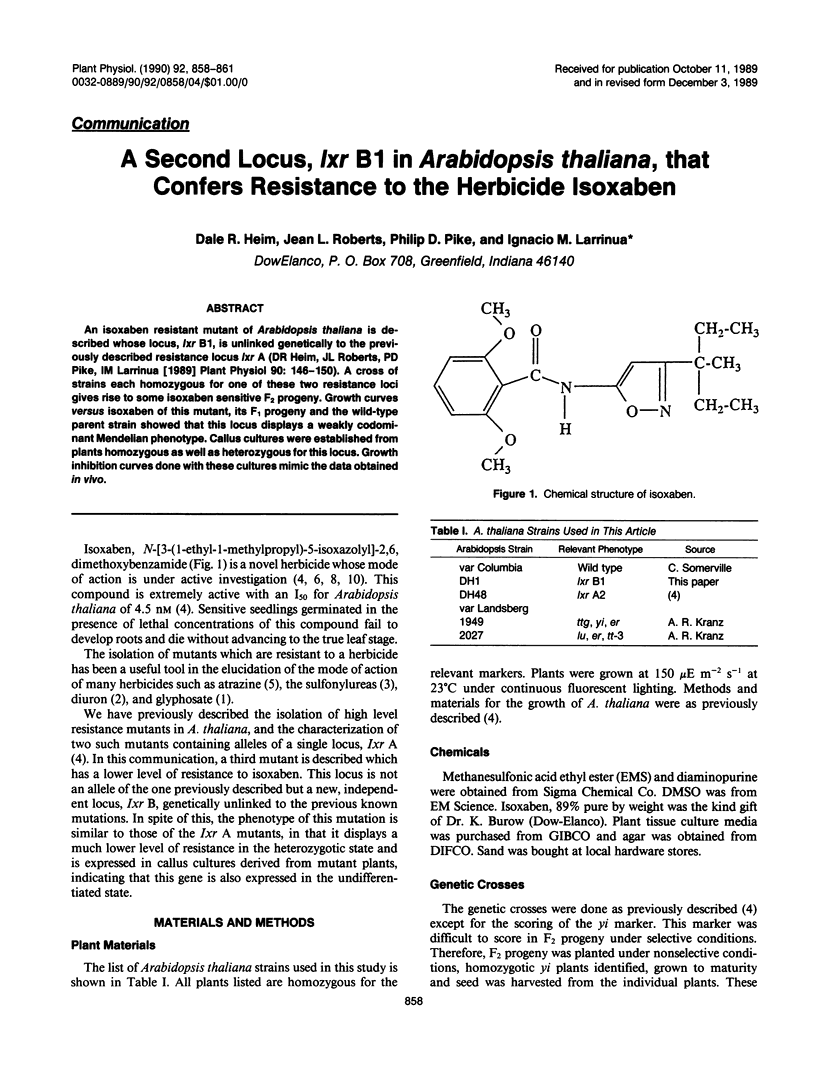Abstract
An isoxaben resistant mutant of Arabidopsis thaliana is described whose locus, Ixr B1, is unlinked genetically to the previously described resistance locus Ixr A (DR Heim, JL Roberts, PD Pike, IM Larrinua [1989] Plant Physiol 90: 146-150). A cross of strains each homozygous for one of these two resistance loci gives rise to some isoxaben sensitive F2 progeny. Growth curves versus isoxaben of this mutant, its F1 progeny and the wild-type parent strain showed that this locus displays a weakly codominant Mendelian phenotype. Callus cultures were established from plants homozygous as well as heterozygous for this locus. Growth inhibition curves done with these cultures mimic the data obtained in vivo.
Full text
PDF



Selected References
These references are in PubMed. This may not be the complete list of references from this article.
- Erickson J. M., Rahire M., Rochaix J. D., Mets L. Herbicide resistance and cross-resistance: changes at three distinct sites in the herbicide-binding protein. Science. 1985 Apr 12;228(4696):204–207. doi: 10.1126/science.228.4696.204. [DOI] [PubMed] [Google Scholar]
- Heim D. R., Roberts J. L., Pike P. D., Larrinua I. M. Mutation of a Locus of Arabidopsis thaliana Confers Resistance to the Herbicide Isoxaben. Plant Physiol. 1989 May;90(1):146–150. doi: 10.1104/pp.90.1.146. [DOI] [PMC free article] [PubMed] [Google Scholar]
- Hirschberg J., McIntosh L. Molecular Basis of Herbicide Resistance in Amaranthus hybridus. Science. 1983 Dec 23;222(4630):1346–1349. doi: 10.1126/science.222.4630.1346. [DOI] [PubMed] [Google Scholar]


